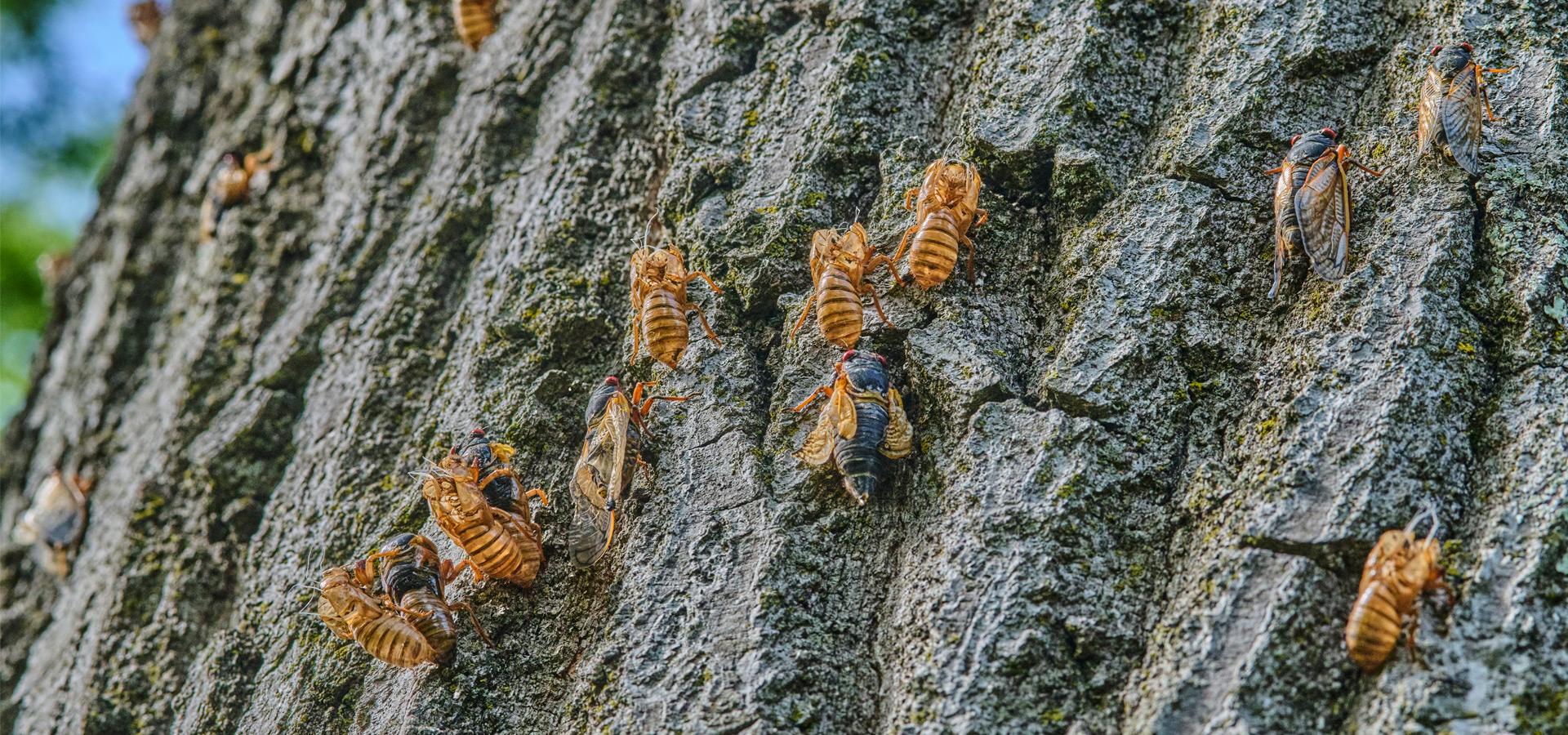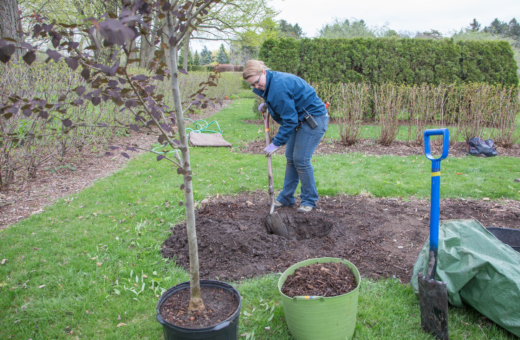May 28, 2024
Scientists and horticulturists at The Morton Arboretum have a rare research opportunity in the current emergence of 17-year cicadas. It’s a moment that researchers have been waiting for as they have been preparing to study the short- and long-term effects of this remarkable natural phenomenon on soil and trees.
Although the natural relationship between periodical cicadas and trees is ancient, there is much that is not known about it because the opportunities for scientists to collect data are separated by long intervals of time. The Arboretum, with its 102-year history, detailed records, and diverse, permanent living tree and plant collections that include both native and non-native species, provides especially favorable circumstances for long-term research.
In the Soil Ecology Research Program (informally called the soil lab), “We’re specifically focused on dead cicadas,” as well as the exoskeletons that cicadas shed when they molt from nymphs to adults, said Meghan Midgley, PhD, soil ecologist and director of the Arboretum’s Center for Tree Science.
The soil lab studies how leaf litter–the layer of dead leaves and other organic matter that accumulates on the soil surface–is broken down by soil organisms and affects the growth of trees and other plants. “Much like leaf litter, cicadas are rich in nutrients,” Midgley said. “After they die, they decompose and add a pulse of nutrients to the soil.”
Soil lab scientists will be working with the Root Biology Research Program and the Forest Ecology Research Program in studying cicada effects. They will be measuring dead cicada biomass and nutrient content and the concentrations of those nutrients that are later found in the soil. Then, she said, “we’ll be tracking tree growth this year and beyond with the hope that we’ll be able to connect this cicada pulse to tree growth.” That growth takes place both aboveground, in the branches and leaves, and belowground, in the root system.
Midgley said, “We’re collecting cicada carcasses directly next to trees and on the forest floor, as well as the ones that fall into leaf litter baskets.” Those baskets—which look somewhat like hanging butterfly nets—can be seen in various areas of the Arboretum. They collect everything that falls in a certain area, so the soil lab can sample and analyze the organic matter that accumulates in the soil.
Arboretum scientists also will be asking: Which trees are cicadas most attracted to? For instance, are they more or less abundant in areas with evergreen or deciduous trees?
To explore this question, they’re taking advantage of the Arboretum’s forestry plots—areas such as the Spruce Plot, planted decades ago with trees of the same species and the same age—and its East Woods, an expanse that is managed as a natural area of oak-dominated woodland. Since scientists have been monitoring these areas for many years, they will be able to isolate the cicadas’ effects by comparing pre-cicada years to this current cicada influx.
Meanwhile, the Collections and Horticulture Department also will be collecting cicada data this year and for years to come. The staff members who care for the Arboretum’s plants will be recording the effects on different kinds of trees and shrubs in order to better protect them when Brood XIII of cicadas emerges again in 17 years.
Although periodical cicadas are mostly harmless, they do present some risk of damage to small trees and shrubs because the females slit twigs and young branches to make a place to lay their eggs. A few hundred of the Arboretum’s most valued saplings have been wrapped in netting to exclude cicadas, but there are far too many trees and shrubs to protect them all.
“Our horticultural staff is going to be making careful observations of which plants are most preferred for egg-laying and other questions,” said Stephanie Adams, PhD, plant health care leader. For example, was a twig the site of just one egg-laying, or did it suffer several slits? Over time, how well do different kinds of plants compartmentalize the injuries and seal over the slits? How much do plants of various kinds, with different degrees of injury, grow in the years after the cicada emergence?
These records will be added to BRAHMS, the public online database of the Arboretum’s collections, so they will be available to other researchers and horticulturists.
“In 17 years, we’ll be able to say, ‘these plants were most vulnerable, and these not so much,’ ” Adams said. “It’s a process of learning that will lead to better plant care.”



